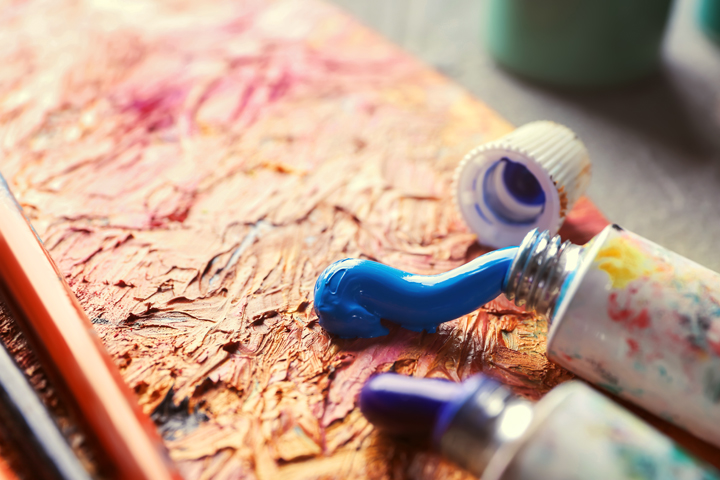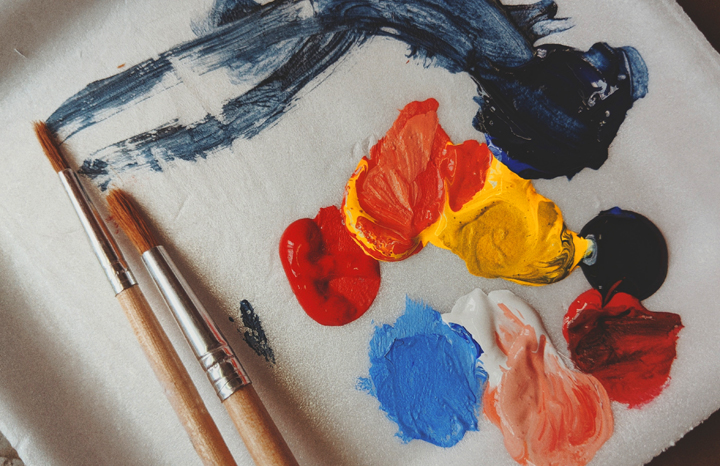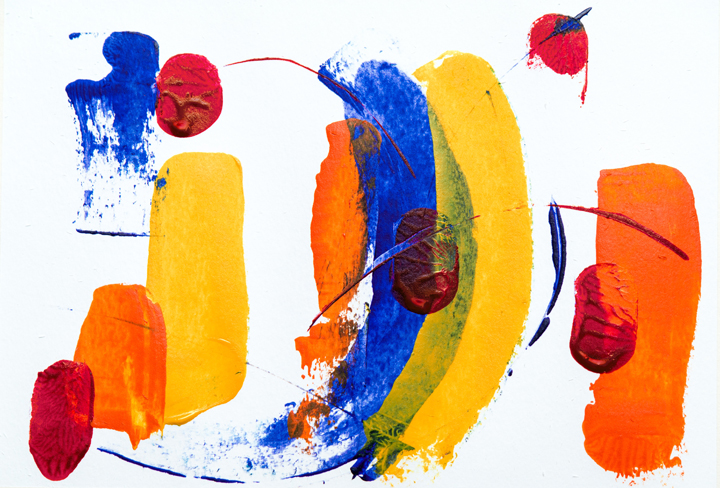If you’re experimenting with mixing colors, you might wonder what color does orange and blue Makemake.
It’s obvious what happens when you mix more common color combinations. We all know that you get green when you mix blue and yellow. Add red to yellow, and you’ll end up with orange.
But what do orange and blue make?
These colors are bright, vibrant shades. They are as far apart on the color wheel as it’s possible to be. And while orange is a rich, warm shade, blue is a cool color.
So, what happens when you combine orange and blue?
Blue + orange = what color?

You might be surprised to find the answer! So, if you’re curious, read on! You’ll soon become a color expert and feel more confident mixing paint for your artwork.
Orange and Blue – Opposites Attract

Orange and blue are gorgeous colors to put together on a canvas. They are opposite each other on the color wheel, which means that these colors have a strong contrast.
But when you have two colors directly opposite each other, we also call them complementary colors. And that’s because it’s true that opposites attract.
These two colors are striking when used in juxtaposition. That’s why you’ll often find blue and orange used on a brand logo (for example, in the Firefox logo).
Interior designers also love using the blue and orange color palette. And as you can imagine, it looks incredible on canvas, too. The master, Vincent Van Gogh, incorporated blue and orange into many of his paintings.
Warm and Cool Colors

Blue is a primary color (as you probably remember from your art classes in elementary school!). It’s on the cool end of the spectrum. And when you look at a color wheel, you’ll find blue between purple and green. These are all cooler colors that evoke calm, tranquil vibes.
In contrast, orange is a warm color found between red and yellow. It’s a secondary color that you get when you mix these two primary colors.

Warm colors like orange are often used to convey passion, energy, love, and vivacity.
So, what is the result when you mix a warm secondary color with a cool primary color? Let’s find out what you get when you combine blue and orange!
What Color Do Blue and Orange Make?

When you mix orange and blue, you’ll end up with brown.
You might have discovered this accidentally if you use watercolors and your shades bled into each other.
But it’s helpful to know if you ever want to create brown. And by knowing this, you can also ensure that your colors don’t mix unless you want them to.
What do I mean by that? Well, imagine that you’re painting a vibrant scene. Maybe you’ve chosen to paint orange flowers against a blue background. The last thing you want is for your bright colors to mix together and become a dirty brown shade.
Any time you mix orange and blue, you’ll get a brown hue. The exact shade can vary depending on the colors you started with.
So, a bright, cooler orange will create a different result than a warm, earthy shade. And if you use a deep, dark blue, it will look very different from a pale blue.
But you can be sure that the result will be a shade of brown.
What Kind of Color is Brown?

Now, you might be looking for brown on the color wheel. In that case, you’re likely to be stumped.
The reason is that brown is a composite color, also known as a neutral color.
And this means that brown is made by mixing different pigments together (as you’ve just seen).
But you’ll only find pure color on the color wheel, so there’s no place for brown.
Brown can have many different connotations and create a variety of effects in art. It’s sometimes seen as a boring shade, but it’s very useful at times.
For example, if you create nature artwork, you’ll need to use brown at some point. It’s one of the most common colors found in the natural world.
As a result, brown is often a very earthy, stable, and calming shade. It can evoke security, stability, and goodness in a constantly changing world.
On the other hand, brown can create a sad, dull, or even claustrophobic atmosphere. So, it all depends on how you use it.
Adding More Orange to the Mix

You can experiment with color ratios and blends to create different shades of brown. One example is by using more orange than blue paint.
When you do this, you’ll end up with a warmer, richer brown color. That’s because the warm orange color will outweigh the cooler blue.
Adding More Blue to the Mix

And in contrast, you’ll get the opposite effect if you add more blue than orange. In this scenario, you’ll have more of the cooler color than the warm color. So, your brown hue will also be cooler as a result.
That’s helpful to know if you have a cool color palette. For example, you might want your brown shade to compliment the other colors on your canvas. So, just add a bit more blue instead of using equal amounts of your colors. You can mix it in slowly until you get the perfect shade.
Picking the Right Shade of Blue and Orange

But there’s more to mixing colors than picking a blue and orange and getting the ratio right. You should also consider what kind of blue and orange you want to use.
There are countless shades— sky blue, cobalt, cerulean, indigo, cornflower, turquoise, etc. You see where I’m going here. Check out this guide to more than 40 shades of blue for inspiration!
And the same goes for orange. You have apricot, saffron, tangerine, ginger, sienna, and many more.
Depending on what blue or orange you choose, you’ll end up with a slightly different brown. The best way to find the perfect shade is to experiment! Mix a little of each color and see what you get.
But if you’re short on time, you can use this color mixing website instead.
Adding White to Your Color Combo

When you add white paint, you’ll end up with a lighter brown color. This is a great way to tweak the color if it’s not exactly what you want.
But remember only to add a little at a time, or you’ll wash out your canvas. You don’t want to end up with a color that is too pale and lacking in vibrancy.
Adding Black to Your Color Combo

So, you’ve mixed orange and blue to make brown. If you want to darken the shade, you can add a little black paint to the mix.
But be very lighthanded, or you could risk making it too dark. It’s hard to go back once you’ve added too much paint, so be cautious with this strategy.
Recap: Blue + Orange = What Color?

So as you now know, you’ll get brown when you mix orange and blue. You might have been surprised that two bright colors make such a murky shade when mixed.
But knowing this shortcut can be helpful when you have a limited paint palette. It might come in handy one day when you’re painting!
Go ahead and share this article on social media if you found it helpful! And don’t forget to follow Proactive Creative for all the latest creative content.





